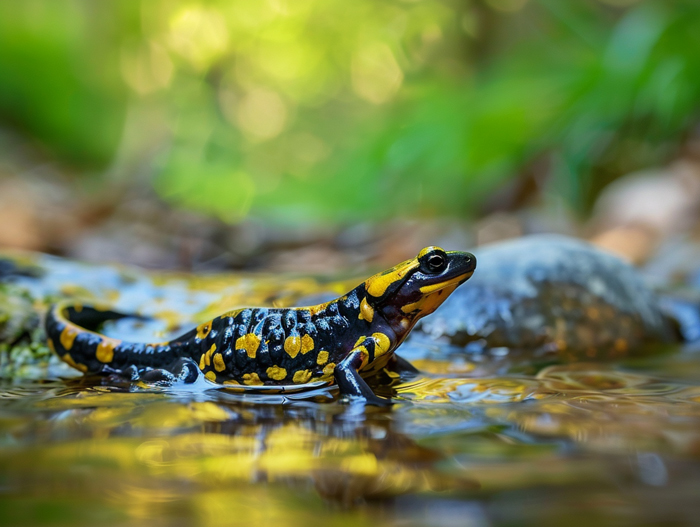Are you curious about whether a salamander is a reptile or amphibian? The distinction between these two classifications can be quite intriguing. Let’s investigate into the characteristics that define these groups and determine where the salamander fits in. Understanding this distinction can enhance your knowledge of these fascinating creatures. Let’s explore this topic further to shed light on this common question.
Key Takeaways
- Reptiles have dry, scaly skin, lay eggs on land with tough shells, and breathe through lungs.
- Amphibians have moist, permeable skin, lay eggs in water, and undergo metamorphosis from larval to adult form.
- Reptiles are known for dry, scaly skin, while amphibians have moist skin allowing gas exchange.
- Reptiles typically lay eggs on land, while amphibians often lay eggs in water.
- Salamanders are amphibians with moist skin and the ability to regenerate limbs, despite some reptilian characteristics.
- The classification of salamanders as amphibians is based on their moist skin and reliance on water for reproduction and survival.
Understanding the Difference Between Reptiles and Amphibians
When exploring the world of salamanders, understanding the difference between reptiles and amphibians is essential. Here are key characteristics to help you distinguish between the two:

Reptiles:
- Dry, scaly skin for protection.
- Cold-blooded, relying on external sources for body heat.
- Lay eggs with tough shells on land.
- Breathe through lungs.
- Moist, permeable skin for respiration.
- Cold-blooded, needing external sources to regulate body temperature.
- Lay eggs in water.
- Undergo metamorphosis from larval to adult form.
By grasping these distinctions, you can appreciate where salamanders fit in the biological spectrum. Stay tuned as we investigate deeper into this captivating topic.
Characteristics of Reptiles and Amphibians

Skin and Respiratory System
- Reptiles: Known for their dry, scaly skin that aids in preventing water loss.
- Amphibians: Have moist skin that allows for gas exchange through it.
- Reptiles: Typically lay eggs on land and their young are independent at birth.
- Amphibians: Often lay eggs in water and their young undergo metamorphosis from aquatic larvae to terrestrial adults.
Let’s investigate into the unique traits that distinguish these fascinating creatures.
Salamanders: The Ambiguous Creatures

Overview of Salamanders
Salamanders are amphibians with long bodies, short legs, and tails. They are known for their moist skin and the ability to regenerate lost limbs, tail, and some internal organs. These creatures require moist environments to keep their skin from drying out.
Classification Debates
The classification of salamanders as reptiles or amphibians has sparked debates among scientists. While they share some characteristics with reptiles, such as skin texture and the ability to lay eggs on land, salamanders are fundamentally amphibians due to their moist skin and need for water for reproduction and survival.
Conclusion
Salamanders stand out as fascinating creatures with their unique characteristics that clearly align them with the amphibian category. Their distinctive features, such as moist skin, regenerative abilities, and reliance on watery habitats, solidify their classification as amphibians. Even though the ongoing debate among experts, salamanders’ unmistakable traits and behaviors clearly place them within the area of amphibians. Their long bodies, short legs, and tails, combined with their need for moist environments, emphasize their amphibian nature. Salamanders truly embody the essence of amphibious creatures, showcasing a remarkable blend of traits that define their place in the natural world.

Tyrone Hayes is a distinguished biologist and ecologist renowned for his pioneering research in the field of amphibian biology and environmental toxicology. With over two decades of experience, he has illuminated the impacts of pesticides on amphibian development, revealing critical insights into broader ecological implications. Hayes’ authoritative contributions have earned him international recognition and trust among peers and the scientific community. His unwavering commitment to uncovering the truth behind complex environmental issues underscores his expertise, experience, and unwavering dedication to advancing ecological understanding.
